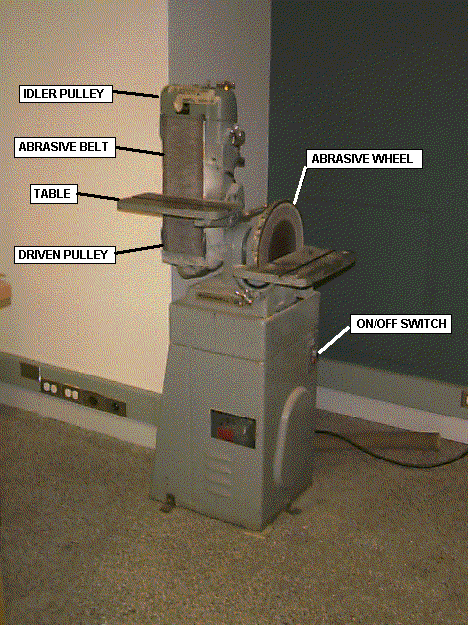
A Belt Sander in the 2.70 Shop

A Belt Sander in the 2.70 Shop
A belt sander is useful for removing burrs and rough edges from parts. It is composed of a belt coated with abrasive riding about two pulleys. The lower pulley is driven by a motor. The upper pulley follows and allows tension in the belt to be adjusted.
Beltsanders are effective on wood, most metals (aluminum, steel, brass, etc), and some plastics. The small particles generated by the belt sander can be toxic. It's good to use a sander with a vent attached to it and to wear a mask when using the belt sander. Don't use the belt sander on printed circuit boards or fiberglass; they create toxic particles.
When smoothing edges and rounding corners, the part should be supported on the table of the machine. The part should be moved back and forth to achieve a better finish and to avoid hot spots on the belt.
(click here for video)1.76MB
To round off the edges of a part, one must hold the part on an angle with respect to the belt. Be sure that the belt is pointing down into the belt as demonstrated in the video. If the part is pointing up, the belt could catch on the part and throw it down into your hand. Note the size of the gap between the belt and table is wider than the workpiece. This is a ddangerous situation. The gap should be adjusted.
(click here for video)2.25MB
Some jobs cannot be done on the large belt sander shown above. For instance it is impossible to smooth out the faces of an inside corner. For this task, a smaller machine with a thin belt is appropriate.
(click here for video)636kB
As the small belt sander was previously configured, it is difficult to smooth out convex features without creating facets on the part. This problem can be alleviated by reconfiguring the machine. The table and platen can be removed to allow the belt to conform to the shape of your part.
(click here for video)2.03MB